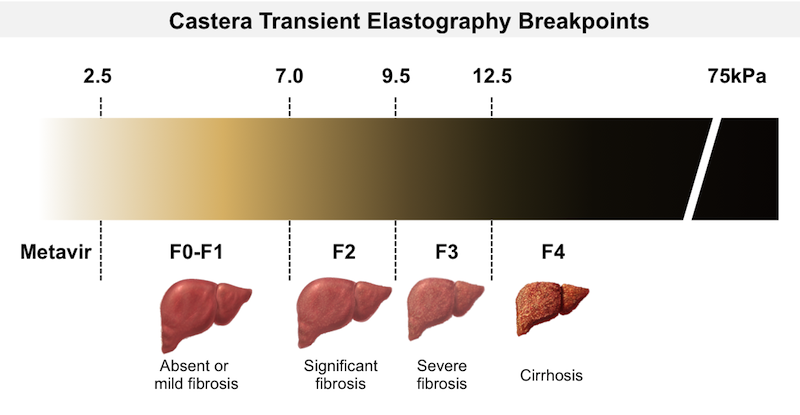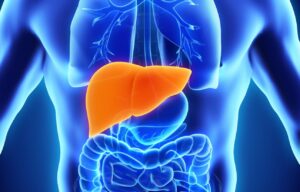
Unveiling Metavir Score: Assessing Liver Fibrosis
Chronic liver diseases pose a significant global health burden, contributing to morbidity and mortality worldwide. Among the various complications of these diseases, liver fibrosis stands out as a critical determinant of prognosis and therapeutic management. In this article, we delve into the intricacies of liver fibrosis assessment, with a particular focus on the Metavir score—a widely used grading system that provides valuable insights into the severity of fibrosis and inflammation.
Through an in-depth exploration of the Metavir score’s significance, interpretation, clinical applications, limitations, and future perspectives, we aim to provide clinicians, researchers, and policymakers with a comprehensive understanding of this vital aspect of liver health care. By elucidating the complexities of liver fibrosis evaluation and envisioning future directions in the field, we strive to pave the way for improved diagnostic accuracy, personalized treatment strategies, and enhanced outcomes for patients with chronic liver diseases.
What is Metavir Score?
The Metavir score is a standardized grading system utilized by healthcare professionals to evaluate the severity of liver fibrosis and inflammation in patients with chronic liver diseases, particularly hepatitis C and hepatitis B. It was developed in the early 1990s by French hepatologists and has since become widely accepted due to its simplicity and reliability.
The score assigns grades to both fibrosis and inflammation, providing valuable insights into the progression of liver disease. Fibrosis is graded on a scale from F0 to F4, where F0 indicates no fibrosis and F4 represents cirrhosis. Inflammation is graded on a scale from A0 to A3, with A0 indicating no inflammation and A3 denoting severe inflammation.
Interpreting the Metavir score involves analyzing biopsy samples of liver tissue under a microscope and assigning the appropriate grade based on the observed histological features. This information helps clinicians make informed decisions regarding treatment strategies, prognosis assessment, and disease management.
Overall, the Metavir score plays a crucial role in clinical practice, guiding treatment decisions and prognosis assessment for patients with chronic liver diseases. It provides clinicians with valuable information to monitor disease progression and evaluate the effectiveness of therapeutic interventions.
Significance of Metavir Score
The significance of the Metavir score lies in its ability to provide clinicians with valuable insights into the progression and severity of liver fibrosis and inflammation in patients with chronic liver diseases. Here are several key points highlighting its significance:
- Assessment of Disease Progression: The Metavir score allows healthcare professionals to assess the extent of liver fibrosis and inflammation over time. This information is crucial for monitoring disease progression and determining the urgency of intervention;
- Treatment Guidance: By accurately assessing the degree of liver fibrosis and inflammation, the Metavir score helps clinicians tailor treatment strategies to individual patients. For example, patients with advanced fibrosis may require more aggressive therapy to prevent disease complications such as cirrhosis and liver failure;
- Prognosis Evaluation: The Metavir score provides valuable prognostic information, helping clinicians predict the likelihood of disease progression and complications. Patients with higher Metavir scores indicating more severe fibrosis and inflammation are at increased risk of developing complications such as portal hypertension, hepatocellular carcinoma, and liver-related mortality;
- Monitoring Treatment Response: For patients undergoing treatment for chronic liver diseases, such as antiviral therapy for hepatitis C or B, the Metavir score serves as a tool to monitor treatment response. Improvements in Metavir scores following therapy indicate regression of liver fibrosis and inflammation, while stable or worsening scores may suggest treatment failure or disease progression;
- Clinical Research and Trials: The Metavir score is widely used in clinical research and trials evaluating new therapies for chronic liver diseases. By providing a standardized method for assessing liver fibrosis and inflammation, the Metavir score allows researchers to accurately measure treatment outcomes and compare the effectiveness of different interventions.
Overall, the Metavir score is of significant clinical importance in the management of chronic liver diseases. Its ability to accurately assess liver fibrosis and inflammation helps guide treatment decisions, evaluate prognosis, monitor treatment response, and advance research efforts aimed at improving patient outcomes.
Interpreting Metavir Score
Interpreting the Metavir score involves understanding the grading system used to assess liver fibrosis and inflammation in patients with chronic liver diseases. Here’s how the Metavir score is interpreted:
Fibrosis Grading (F0-F4):
- F0: Absence of fibrosis. No evidence of abnormal collagen deposition in the liver tissue;
- F1: Portal fibrosis without septa. Minimal fibrosis limited to the portal areas;
- F2: Portal fibrosis with few septa. Fibrosis extends beyond portal areas, but the septa are still relatively sparse;
- F3: Numerous septa without cirrhosis. Significant fibrosis with numerous septa formation but without architectural distortion characteristic of cirrhosis;
- F4: Cirrhosis. Advanced fibrosis with extensive septa formation and architectural distortion, indicative of cirrhosis.
Inflammation Grading (A0-A3):
- A0: No histological activity. No evidence of inflammation or necrosis in the liver tissue;
- A1: Mild activity. Minimal inflammatory infiltrates and limited necrosis;
- A2: Moderate activity. Moderate inflammatory infiltrates and more extensive necrosis;
- A3: Severe activity. Marked inflammatory infiltrates with significant necrosis and/or bridging necrosis.
Combined Interpretation:
- The Metavir score combines the fibrosis grade (F0-F4) with the inflammation grade (A0-A3) to provide a comprehensive assessment of liver histology;
- For example, a Metavir score of F2 indicates moderate fibrosis, while F2/A2 indicates moderate fibrosis with moderate inflammation.
Clinical Implications:
- Higher Metavir scores (e.g., F3-F4) indicate more advanced liver disease and are associated with an increased risk of complications such as portal hypertension, liver failure, and hepatocellular carcinoma;
- Lower scores (e.g., F0-F1) suggest minimal fibrosis and inflammation, indicating a lower risk of disease progression.
Treatment Decision Making:
- The interpretation of the Metavir score guides treatment decisions in patients with chronic liver diseases. For example, patients with advanced fibrosis (F3-F4) may require closer monitoring and more aggressive treatment strategies to prevent disease progression and complications.
Monitoring Disease Progression and Treatment Response:
- Regular monitoring of the Metavir score allows clinicians to track disease progression over time and evaluate the effectiveness of therapeutic interventions. Improvements in the Metavir score following treatment indicate regression of fibrosis and inflammation, while stable or worsening scores may suggest treatment failure or disease progression.
Understanding and accurately interpreting the Metavir score is essential for healthcare professionals in managing patients with chronic liver diseases, as it informs treatment decisions, prognosis assessment, and monitoring of disease progression and treatment response.
Clinical Applications
The Metavir score holds significant clinical applications in the management of patients with chronic liver diseases. Here are some key clinical applications:
- Diagnosis and Staging: The Metavir score helps clinicians diagnose chronic liver diseases, such as hepatitis C and hepatitis B, by assessing the severity of liver fibrosis and inflammation. It provides valuable information for staging the disease, ranging from minimal fibrosis (F0) to advanced cirrhosis (F4);
- Treatment Guidance: The Metavir score guides treatment decisions by informing clinicians about the severity of liver fibrosis and inflammation. Patients with advanced fibrosis or cirrhosis (F3-F4) may require more aggressive treatment strategies, such as antiviral therapy or liver transplantation, to prevent disease progression and complications;
- Prognosis Assessment: The Metavir score helps clinicians evaluate the prognosis of patients with chronic liver diseases. Higher Metavir scores indicating advanced fibrosis or cirrhosis are associated with an increased risk of liver-related complications, such as portal hypertension, liver failure, and hepatocellular carcinoma. This information guides clinicians in counseling patients about their disease prognosis and potential outcomes;
- Monitoring Disease Progression: Regular monitoring of the Metavir score allows clinicians to track disease progression over time. Changes in the Metavir score, such as worsening fibrosis or inflammation, may indicate disease progression and the need for adjustments to treatment strategies or closer monitoring;
- Assessment of Treatment Response: The Metavir score is used to assess the effectiveness of therapeutic interventions, such as antiviral therapy for hepatitis C or hepatitis B. Improvements in the Metavir score following treatment indicate regression of liver fibrosis and inflammation, while stable or worsening scores may suggest treatment failure or disease progression. This information helps clinicians evaluate the response to treatment and make informed decisions about continuing or modifying therapy;
- Clinical Research: The Metavir score is widely used in clinical research to evaluate the efficacy and safety of new therapies for chronic liver diseases. By providing a standardized method for assessing liver fibrosis and inflammation, the Metavir score allows researchers to measure treatment outcomes accurately and compare the effectiveness of different interventions.
Overall, the Metavir score plays a crucial role in clinical practice by guiding diagnosis, treatment decisions, prognosis assessment, and monitoring disease progression in patients with chronic liver diseases. Its widespread use underscores its importance as a valuable tool for improving patient care and outcomes.
Limitations and Challenges
While the Metavir score is a valuable tool for assessing liver fibrosis and inflammation in patients with chronic liver diseases, it is not without limitations and challenges. Some of these include:
- Invasive Procedure: The primary method for obtaining Metavir scores involves liver biopsy, which is an invasive procedure. Liver biopsy carries risks, such as bleeding, pain, and rarely, severe complications like injury to surrounding organs. Additionally, some patients may be reluctant to undergo biopsy due to fear or discomfort;
- Sampling Variability: Liver biopsy samples only a small portion of the liver, leading to sampling variability. This means that the severity of fibrosis and inflammation observed in the biopsy sample may not accurately represent the entire liver. Sampling variability can affect the reliability and accuracy of the Metavir score;
- Subjectivity in Interpretation: Interpreting liver biopsy samples to assign Metavir scores involves subjective judgment by pathologists. Variability in interpretation can occur between different pathologists or even by the same pathologist at different times. This subjectivity may lead to inconsistency in Metavir scores and affect clinical decision-making;
- Limited Patient Accessibility: Due to the invasive nature of liver biopsy and the need for specialized expertise in histopathology, the accessibility of Metavir scoring may be limited. Some patients may not have access to facilities or healthcare providers capable of performing liver biopsies and interpreting the results, particularly in underserved or rural areas;
- Non-Dynamic Assessment: The Metavir score provides a snapshot of liver fibrosis and inflammation at a single point in time. It does not capture the dynamic nature of liver disease, which may evolve over time in response to various factors, including treatment interventions, lifestyle changes, and disease progression. Therefore, serial monitoring may be necessary to assess changes in fibrosis and inflammation accurately;
- Alternative Assessment Methods: Advances in medical imaging techniques, such as transient elastography (FibroScan) and serum biomarkers, offer non-invasive alternatives to liver biopsy for assessing liver fibrosis. These methods provide valuable information without the risks and limitations associated with biopsy. However, they may not fully replace liver biopsy in all clinical scenarios and have their own limitations.
Despite these limitations and challenges, the Metavir score remains a valuable tool in the assessment and management of chronic liver diseases. Continued research efforts aim to address these limitations by improving the accuracy, reliability, and accessibility of liver fibrosis assessment methods.
Future Perspectives
The future of liver fibrosis assessment, including the Metavir score, holds promising developments aimed at addressing current limitations and improving patient care. Here are some future perspectives:
- Non-Invasive Assessment Methods: Advances in non-invasive techniques for liver fibrosis assessment, such as transient elastography (FibroScan), magnetic resonance elastography (MRE), and serum biomarkers, offer alternatives to liver biopsy. These methods are less invasive, more accessible, and provide quantitative measures of liver fibrosis without the need for tissue sampling. Continued research aims to enhance the accuracy and reliability of these non-invasive tools for widespread clinical use;
- Multiparametric Approaches: Future research may focus on combining multiple assessment modalities, including imaging techniques, serum biomarkers, and clinical parameters, to create multiparametric algorithms for liver fibrosis evaluation. These integrated approaches aim to improve diagnostic accuracy and provide comprehensive assessments of liver health, allowing for personalized treatment strategies tailored to individual patient needs;
- Artificial Intelligence and Machine Learning: The application of artificial intelligence (AI) and machine learning techniques in liver fibrosis assessment holds great potential for enhancing the accuracy and efficiency of diagnostic algorithms. AI algorithms can analyze complex datasets, including histological images, genetic markers, and clinical data, to identify patterns and predict disease outcomes. Integration of AI-driven tools into clinical practice may improve the interpretation of Metavir scores and aid in treatment decision-making;
- Point-of-Care Testing: Development of point-of-care testing devices for liver fibrosis assessment could revolutionize patient care by providing rapid, accurate, and accessible diagnostic tools. Portable devices capable of assessing liver fibrosis at the bedside or in primary care settings would improve patient convenience, reduce healthcare costs, and facilitate early detection and intervention for liver disease;
- Biomarker Discovery: Ongoing research efforts aim to identify novel serum biomarkers and imaging markers for liver fibrosis assessment. Biomarker discovery studies seek to identify specific molecules or genetic markers associated with liver fibrosis progression, inflammation, and response to treatment. Validated biomarkers could serve as non-invasive surrogate endpoints in clinical trials and improve risk stratification in patients with chronic liver diseases;
- Patient-Centered Care: Future developments in liver fibrosis assessment will prioritize patient-centered care, focusing on individualized risk stratification, shared decision-making, and patient engagement. Emphasis will be placed on empowering patients with information about their liver health, facilitating access to care, and promoting lifestyle modifications to prevent disease progression.
In conclusion, the future of liver fibrosis assessment holds promise for improved diagnostic accuracy, accessibility, and patient outcomes. Advances in non-invasive assessment methods, integration of multiparametric approaches, utilization of AI and machine learning, development of point-of-care testing devices, biomarker discovery, and patient-centered care will shape the landscape of liver disease management in the years to come.
The evolution of liver fibrosis assessment reflects a commitment to advancing precision medicine and improving the quality of care for patients with chronic liver diseases.
Conclusion
Our exploration into liver fibrosis assessment and the Metavir score has shed light on the multifaceted nature of liver disease management. We have uncovered the critical role that the Metavir score plays in guiding treatment decisions, prognostic evaluation, and monitoring disease progression in patients with chronic liver diseases. However, we also recognize the limitations and challenges associated with liver biopsy-based assessment methods, prompting the need for continued innovation and advancement in non-invasive diagnostic techniques.
Looking ahead, the future of liver fibrosis assessment holds promise for improved patient care through the integration of multiparametric approaches, artificial intelligence, point-of-care testing, biomarker discovery, and patient-centered care models. As we navigate the evolving landscape of liver health care, let us remain steadfast in our commitment to advancing precision medicine and enhancing the quality of life for individuals affected by chronic liver diseases.

